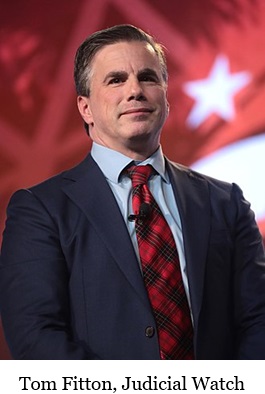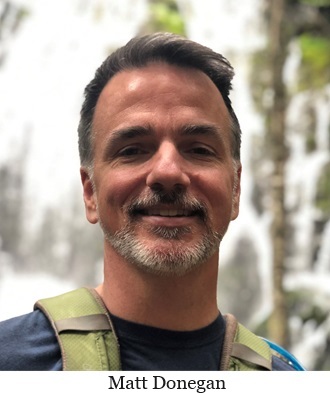
On this day, September 1, 1836, Protestant missionary Dr. Marcus Whitman led a party to Oregon. His wife, Narcissa, was one of the first white women to travel the Oregon Trail.
 Post an Event
Post an Event
| Benton County Republicans’ Private Fundraising Event, “Bent-on Boots and Bling” with Trey Taylor |
| Friday, September 5, 2025 at 5:00 pm |
| Featuring Trey Taylor
Music Private Event
Friday, September 5, 2025 5:00-5:30 pm VIP Reception
5:30-8:00 pm Heavy Appetizers,
Auction, Concert
Red: $750 VIP Reception
Front Row Table Sponsor
White: $500 Table Sponsor
Blue: $50 per person
Limited Seating. Get Yours Now!!!
Support Local
Dress up: Bling, Cowboy, Patriotic Benton County Republican
FUNDRAISER
www.BentonGOP.org
Get your tickets today at:
https://www.bentongop.org/event-details/benton-county-republicans-fundraiser/form
About Trey:
Trey is the youngest African American Man in Country Music History. The Denver Post wrote
"It's impossible to miss his enthusiasm. With a fondness for cowboy boots, gaudy colors and dazzling jewelry, Trey Taylor could stand toe to toe with any of the Pop, Country or even Rap
contemporaries of his generation.“ |
| Trysting Tree Golf Club, 34028 NE Electric Rd., Corvallis |
Establishes structure for management of and participation in the Oregon Main Street Network
Oregon Parks and Recreation Department (OPRD) is seeking public comment on proposed updates to the Oregon Main Street Network rule to include Oregon Main Street. (
OAR 736-056-0000 through 736-056-0080).
Downtowns are traditionally the heart of a community – the social, economic, and civic center. Many of our downtowns in Oregon are “diamonds in the rough" that need a little polishing to sparkle once again. Others are vibrant and want to maintain their competitive advantage. Oregon Main Street Revitalization Grant Program and funding was passed by the Oregon legislature in 2015, but never added to or made a part of ORS chapter 390 (
ORS 390.262 and 390.264). The program intends to help communities wherever they are in their downtown revitalization efforts.
What is most noticeable is the proposed rules may be in violation of the U.S. Supreme Court’s overturning Chevron U.S.A., Inc. v. Natural Resources Defense Council (1984), allowing agencies to exercise significant discretion in interpreting laws, while courts played a limited role in reviewing those interpretations.
The proposed rules implements the Main Street Approach™ trademarked and managed by Main Street America, a third party, national nonprofit that isn’t mentioned in the enabling statute. Oregon Parks and Recreation Department holds an annual agreement with Main Street America to be the official statewide coordinating program, also not mentioned in the enabling statute.
Oregon Main Street provides training and technical assistance to communities participating in the Main Street Track of the Oregon Main Street Network and allows for access to the Oregon Main Street Revitalization Grant which funds building improvement projects that spur economic development for all Network communities (available once per biennium in odd years).
The proposed rule will include parameters for participation in the Oregon Main Street Network, describe how resources will be provided to participating organizations and establish primary structure for management of and participation in the Oregon Main Street Network. The proposed rules provides for representation, but lacks a requirement that participants must live or operate in the greater main street area.
Communities with population over 5,000 are obligated to hire a full-time executive managerial position or part-time if less in order to qualify for the program and a grant. How long will a grant pay for that position before taxpayers are obligated?
A D V E R T I S E M E N T

A D V E R T I S E M E N T
OPRD is accepting comments until 5 p.m. August 31, 2024, and they can be made
online, at a public hearing, in writing or via email: D.Publiccomment@oprd.oregon.gov or OPRD.Publiccomment@oprd.oregon.gov.
Mail: OPRD, attn: Helena Kesch, 725 Summer St NE, Suite C, Salem OR 97301
Virtual Public Hearing: 1 p.m. August 26th. Must
register in advance to receive conference link.
Individuals who require special accommodations for the meeting should contact Helena Kesch at least three days in advance of the meeting at Helena.KESCH@oprd.oregon.gov or 503-881-4637.
--Donna Bleiler| Post Date: 2024-08-02 12:30:54 | Last Update: 2024-08-01 21:15:25 |
OR-04 is becoming a top flip opportunity in the nation
The National Republican Congressional Committee
named Monique DeSpain to their Young Guns Program, recognizing her campaign as one of the best in the country and making OR-04 a key flip opportunity for national Republicans.
“I am honored to be named to the NRCC’s Young Guns Program as one of the nation’s strongest challengers in my campaign to unseat corrupt incumbent career politician Congresswoman Val Hoyle,” stated DeSpain. “Val Hoyle has been a rubber stamp for all the worst policies coming out of Washington, D.C., and is under federal investigation for a pay-to-play scheme in Oregon. Voters are in desperate need of an authentic servant leader who will listen to and represent them with transparency and integrity and enact real and lasting policies that address their top concerns.”

The NRCC’s Young Guns program recognizes a handful of the strongest Republican challenger campaigns in the country. The campaigns selected have met rigorous benchmarks demonstrating strength in campaign organization, fundraising, communications, and grassroots engagement. This past May, the Democratic Congressional Campaign Committee
moved Val Hoyle to its “frontline” list of vulnerable incumbents, a powerful sign of Hoyle’s weakness versus the strong challenge being offered by GOP nominee DeSpain. She has challenged Hoyle to
six debates in six counties in the 4th District, to which Hoyle has so far failed to agree.
The newly redistricted CD4 contains the counties of Lincoln, Benton, Lane, parts of Douglas, Coos and Curry.
“As a retired Air Force Colonel, a fighter for crime victims, and the mother of twin sons, I will pursue bold, commonsense solutions to secure our borders, end the fentanyl crisis, restore an affordable economy, and bring the transparency and accountability to government that voters deserve this November,” added DeSpain.
--Staff Reports| Post Date: 2024-08-01 06:06:51 | Last Update: 2024-07-29 13:29:11 |
“A breach of their right to not have law enforcement rifle through their personal information in search of a crime”
A lawsuit has been filed by Oregon plaintiffs in federal court against the federal government, naming Treasury Secretary Janet Yellen regarding the constitutionality of the
Corporate Transparency Act. The plaintiffs are seven Oregon business owners.
According to the
motion for injunction:
Buried deep in over 1,500 pages of the National Defense Authorization Act of 2021 ("NDAA") are fifteen pages of regulatory statue call the Corporate Transparency Act The "Sense of Congress" is that the CTA is necessary because "more than 2,000,000 corporations and limited liability companies are being formed under the laws of the States each year" and that most States do not set about to require or collect information about the beneficial owners of such entities. Congress further notes that "malign actors use the types of entities being regulated by the CTA for a litany of criminal activities including "money laundering, the financing of terrorism, proliferation financing, serious tax fraud, human and drug trafficking, counterfeiting, piracy, securities fraud, and acts of foreign corruption."
While there is no dispute that these issues are serious and of genuine concern, rather than make investments into already-existing Federal agencies whose mission is to bring these types of criminals to justice, or make budget allocations to States to address these types of crimes at a local level by helping local law enforcement enforce existing State law, the CTA instead designs a complex statutory and regulatory scheme, replete with eye-popping civil and criminal penalties, which starts from a premise that all businesses subject to the CTA should be and will be suspect of these kinds of criminal activities at the outset of an entity's formation.
The
motion for injunction describes the impact of the
Corporate Transparency Act:
Developed from a premise that all covered entities should be suspected by law enforcement of engaging in the types of criminal activities that Congress seeks to uncover, the finished work product of the CTA will result in a vast database containing the personally identifiable and "sensitive" information of the covered entities subject to the CTA's requirements. This database, which is designed to give law enforcement agencies unfettered access to the information contained therein, will be managed by the United States Department of Treasury's Financial Crimes Enforcement Network.
Such a collection and aggregation of the individualized and "sensitive information of law-abiding Oregonians like Plaintiffs, in furtherance of providing that information for unwarranted law enforcement purposes, is in opposite of the protections afforded Plaintiffs and others under the First, Fourth, Fifth, and Ninth Amendments. The CTA is a serious breach of Plaintiffs' rights to privacy, their right to not have law enforcement rifle through their personal information in search of a crime for which there is otherwise no reasonable suspicion or probable cause to search, and the right of Plaintiffs to not self-incriminate to the government.
For Plaintiffs, challenging the CTA is not merely an exercise of objecting to another government regulation and more red tape on small businesses. While Plaintiffs most certainly will be burdened by the financial cost of compliance, including the financial costs of trying to ensure Plaintiffs have followed ever step to a "T" and do so every single time a change occurs in their covered entity, the financial cost is only one of several burdens. The cost of compliance includes protecting themselves from the actual threat of civil and criminal penalties when there is no due process and no safe harbor in the law. But most problematic is that cost of compliance includes an unwarranted and unreasonable invasion of Plaintiff's privacy and it does so in violation of their civil rights.
The plaintiffs are accepting contributions to offset their legal costs.
--Staff Reports| Post Date: 2024-07-31 06:38:46 | Last Update: 2024-07-30 14:13:15 |
EPA awards Oregon $197M from the federal CPRG program
The United States Environmental Protection Agency (EPA) announced that it has awarded Oregon $197 million from the federal Climate Pollution Reduction Grant (CPRG) program. This is the largest award announced in the Pacific Northwest. The EPA’s CPRG program provides $5 billion in grants to states, local governments, Tribes, and territories to develop and implement ambitious plans for reducing greenhouse gas emissions and other harmful air pollution.
Authorized under Section 60114 of the Inflation Reduction Act, this two-phase program provided $250 million for noncompetitive planning grants and is now announcing approximately $4.6 billion for competitive implementation grants. The CPRG implementation grants are designed to fund measures contained in climate action plans developed under CPRG planning grants.
Governor Kotek said, “Reducing greenhouse gas (GHG) emissions is a critical strategy to mitigate the impacts of climate change. When I was Speaker of the House, I fought for ambitious GHG reduction goals. This investment is not only an affirmation of Oregon’s collective efforts to combat climate change, but a significant down payment on our ability to meet our reduction goals with a statewide approach. I want to thank Oregon’s congressional delegation for their partnership in making this key investment happen.”
“Every community is feeling the impacts of climate change, from heat waves and drought conditions to increased wildfire smoke and severe winter storms. We must act collaboratively to reduce carbon emissions and to address the adverse impacts on people’s health and our economic prosperity,” said EPA Regional Administrator Casey Sixkiller. “Through the Biden Administration’s Inflation Reduction Act, EPA is partnering with states and local communities to make the largest investments ever in green buildings, clean energy transportation, and climate justice, and the State of Oregon continues to lead the way.”
“Governor Kotek and our state agencies have demonstrated outstanding leadership in securing this highly competitive federal grant,” Meredith Connolly, Director of Policy and Strategy for Climate Solutions said. “This level of funding will enable investments in every corner of Oregon, making clean energy solutions more affordable, our air cleaner, and our economy greener. By transitioning to electric cars, buses, trucks, and heat pumps - all powered by renewable energy - we are also increasing our communities’ long-term resilience in the face of rising wildfire threats and extreme heat. Our organization along with many others stand ready to support the state’s implementation to ensure a swift reduction of climate pollution, with a strong focus on benefiting frontline communities and lower-income Oregonians across the state.”
Oregon will use this federal grant to implement the measures identified in
Oregon’s Priority Climate Action Plan. The prioritized measures fall into three categories that are among the largest contributors to Oregon’s GHG emissions: transportation, residential and commercial buildings, and the handling of waste and materials. The workplan lays out 12 critical measures that will accelerate Oregon’s emission reduction efforts for a vibrant environment, for the health of communities across the state, and for a more sustainable future.
To read
Oregon’s Climate Pollution Reduction Implementation Grant Workplan Narrative, priorities fall into three categories:
- Transportation accounts for at least 35% of state emissions. Incentivizing zero-emission vehicles in all classes will achieve significant reductions in GHGs. Co-benefits include improved public health in communities that are nearest to transportation corridors by lowering tailpipe emissions of criteria and toxic air pollutants such as diesel particulate matter. However, the net zero is the measurement only of the exhaust pipe.
- Residential and Commercial Buildings account for about a third of the state’s GHG emissions. Incentives are proposed to improve the efficiency of existing and new buildings, promote the transition to clean equipment and appliances, and increase building weatherization. Co-benefits include improved indoor air quality, including protection from wildfire smoke, and reduced energy cost burdens due to more
efficient homes and buildings.
- Waste and Materials are also major contributors of GHGs. Oregon’s consumption-based emissions inventory (CBEI) identifies 51 MMT CO2e of additional emissions that are not a part of Oregon’s sector-based inventory. Incentives addressing waste and materials focus on some
of the largest emissions categories in the CBEI, including embodied carbon in the built environment and emissions associated with food. Reducing these emissions, along with significant sources of landfill methane, offers multiple co-benefits and will demonstrate for the nation opportunities to address sources that are more difficult, but still necessary, to abate in ways that are responsive to community needs.
A D V E R T I S E M E N T

A D V E R T I S E M E N T
Waste and Material proposals should be of most concern to residence. Fifteen-minute cities are being explored and this proposal focuses on space-efficient housing, embodied carbon and consumption-based emissions of households. A DEQ study found the operational and embodied carbon impacts of extra-small homes (defined as 1149 SF in the study) are reduced by 20 to 40 percent compared to medium-sized homes. Case studies of building reuse where cites embodied GHG emissions reduced 40 to 75 percent in reuse of existing buildings compared to new construction.
Another concern is food waste as the single largest source of methane generation in landfills, accounting for 58% methane generation (EPA). Methane is a powerful greenhouse gas – 28 times as potent as carbon dioxide in trapping heat in the atmosphere. Is this their way of replacing natural foods? No mention was made of developing more trash incinerators that produce electricity. Opened in 1986, Covanta Energy is the backbone of Marion County's waste management system, diverting 90 percent of the county's trash from landfills and putting it to use creating electricity.
Amid the projects of how emission reduction will benefit quality of health, it never compares it to quality of life. It also lacks an evaluation of how and how much emissions are reduced for the cost and effort.
How many programs are long-term needing additional funding when the grant runs out? Oregon is already in a school crsis when school districts used Covid temporary funds to fund regular services and then the money ran out. Is this a repeat?
--Donna Bleiler
| Post Date: 2024-07-29 17:33:04 | Last Update: 2024-07-27 18:57:41 |
Settlement Board allocates $13 million in opioid settlement funds
Oregon is one of 35 state receiving an allocation of $13.08 million out of at least $55 billion awarded to states and localities from opioid-related
lawsuits. by the Opioid Settlement Prevention, Treatment & Recovery Board (Settlement Board) will expand and strengthen the state’s access to substance use disorder treatment and services through opioid treatment programs (OTPs) and jails. The funding was awarded to OHA, which will administer the allocations. The Board’s decision can be viewed in a
recording of its July 10 meeting.
The Board approved Alcohol and Drug Policy Commission (ADPC) recommendations July 10. The allocation, which Oregon Health Authority (OHA) will administer, will improve access to medication for opioid use disorder and treatment services by providing:
Up to $3.9 million to fund:
- Two mobile or non-mobile medication units in Clackamas County serving Oregon City and rural Clackamas County.
- An opioid treatment program or a mobile or non-mobile medication unit in Multnomah County serving the geographic areas of the county with the highest unmet need.
A D V E R T I S E M E N T

A D V E R T I S E M E N T
Up to $9.1 million to fund a total of seven opioid treatment programs or mobile or non-mobile medication units, specifically:
- Two in Northeastern Oregon.
- One in the Mid-Gorge region.
- One in Klamath County.
- Two in underserved coastal areas.
- One in eastern Lane County.
To be eligible for funding, a mobile or non-mobile medication unit or an opioid treatment program must be currently certified by OHA.
Up to $250,000 to Oregon Health & Science University (OHSU) to provide technical assistance to jails and to foster collaboration between opioid treatment providers and jails.
Prior to awarding any funding, OHA must engage the partners listed in the ADPC proposal and provide a proposed timeline and implementation plan to the Board for approval no later than Sept. 1, 2024. The drawback that was evident during the pandemic, when a windfall of funds are used to establish programs, it creates a future tax obligation to continue. School districts are suffering over poor decisions, will this be a repeat of a lesson not learned?
Since July 2021, the State of Oregon has reached agreement on national lawsuits against several companies for their role in the opioid crisis. Through these agreements, nearly $600 million will be awarded to Oregon over the course of 18 years. Settlement funds from opioid manufacturers, distributors and pharmacies are divided between the State of Oregon (45%) and local jurisdictions (55%).
The state’s share is deposited as it becomes available into the Opioid Settlement, Prevention, Treatment and Recovery (OSPTR) Fund. This fund is controlled by the 18-member
OSPTR Board.
Next meeting is August 7, 2024, 10:00 am – 1:00 pm by zoom.
--Donna Bleiler| Post Date: 2024-07-28 16:48:22 | Last Update: 2024-07-27 18:39:19 |
In a tight CD4 Congressional race, challenger DeSpain calls out Hoyle
Republican candidate Monique DeSpain reacted to Congresswoman Val Hoyle’s vote against
HR 1371 “strongly condemning the Biden Administration and its Border Czar, Kamala Harris’s, failure to secure the United States border.” This week, in the wake of President Biden’s withdrawal from the Presidential race, Val Hoyle
endorsed Vice President Kamala Harris for President, despite Harris’ shocking past
comparisons of the Department of Immigration and Customs Enforcement with the KKK and
calling to get rid of it.

“Yesterday Val Hoyle just added to her horrendous record in Congress by refusing to vote to hold Kamala Harris accountable for her abject leadership failure to fix the crisis at the border,” stated DeSpain. “Given her full-throated endorsement of Harris for President, does Val Hoyle also proudly endorse the Vice President’s comparing ICE to the KKK and calling to get rid of it?”
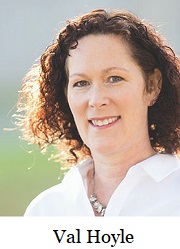
Vice President
Harris took on the lead role to address the crisis at the border
on behalf of the Biden-Harris Administration in 2021 and has since presided over record levels of illegal immigration, drug trafficking, human smuggling, and terrorist infiltration into the country. As a result, 4th District communities, along with those across the nation, have been flooded with deadly fentanyl and meth, skyrocketing addiction and homelessness, and surging crime, while bringing law enforcement and public services to their knees.
Earlier this year, Val Hoyle went to El Paso, TX, and
praised open borders while lecturing her constituents who asked her, “Why don’t you just shut down the border?” explaining that “
We need to have movement through the border and how much we need the workforce.” Seven weeks later, Texas National Guard Troops at an El Paso, TX checkpoint were overrun and assaulted by foreign military-aged males forcing their way into our country. This past May, the Democratic Congressional Campaign Committee moved
Val Hoyle to its “frontline” list of vulnerable incumbents, a powerful sign of Hoyle’s weakness versus the strong challenge being offered by GOP nominee DeSpain.
“We already knew Val Hoyle supports the open border, but now she is 100% in support of the person running for President who was supposed to make things better, but delivered a whole series of national security, public safety, and addiction crises at our border instead. Voters of the 4th District have had enough of Val’s “movement through the border,” said DeSpain. “I will work tirelessly to secure our borders, stop the flow of deadly drugs, support law enforcement, and restore our safe streets and neighborhoods.”
A D V E R T I S E M E N T

A D V E R T I S E M E N T
“It’s time for voters to hear a real debate between Congresswoman Hoyle and me. I have
challenged her to six debates in six counties in the 4th District so voters can hear directly from both of us what we stand for and why their current member of Congress has voted repeatedly against their interests in Washington, D.C.,” said DeSpain.
--Staff Reports| Post Date: 2024-07-27 11:15:12 | Last Update: 2024-07-27 12:11:30 |
States are required by federal law to report data concerning their removal programs
Tom Fitton, President of Judicial Watch released the
notice letter sent to the Oregon secretary of state on behalf of itself, the Constitution Party of Oregon and an Oregon registered voter, notifying them of evident violations of the
National Voter Registration Act (NVRA) of 1993, based on their failure to remove inactive voters from their registration rolls. The notice letter to Oregon serves as a “pre-suit” notice.
The NVRA requires states to “conduct a general program that makes a reasonable effort to remove” from the official voter rolls “the names of ineligible voters” who have died or changed residence. Among other things, the NVRA requires registrations to be cancelled when voters fail to respond to address confirmation notices and then fail to vote in the next two general federal elections. In 2018, the Supreme Court confirmed that such removals are mandatory (
Husted v. A. Philip Randolph Inst., 138 S. Ct. 1833, 1841-42 (2018))
The letter states:
According to your state’s responses to the EAC’s [federal government’s Election Assistance Commission] survey, 19 Oregon counties reported removing zero voter registrations from November 2020 to November 2022 pursuant to Section 8(d)(1)(B) of the NVRA for failing to respond to a Confirmation Notice and failing to vote in two consecutive general federal elections. Another 10 counties reported just a handful of such removals during the same two-year period.
Furthermore, not a single one of Oregon’s 36 counties reported any data whatsoever to the EAC regarding inactive registrations. Instead, in the relevant column where the data should have been, the survey response for each of Oregon’s counties merely stated, “Data not available.”
Oregon’s non-compliance with the NVRA is further illustrated by the unusually high registration rates observed in several of its counties. Comparing the data your state reported to the EAC regarding the total registrations for each county to the U.S. Census Bureau’s most recent five-year estimates of the numbers of resident citizens over the age of eighteen suggests that eight Oregon counties have more voter registrations than citizens of voting age. Several federal courts have determined that such high registration rates are sufficient grounds for alleging a failure to comply with the NVRA’s requirement to make reasonable efforts to remove voters by reason of death or change of address.
“Dirty election rolls can mean dirty elections,” said Judicial Watch President Tom Fitton. “With a presidential election less than four months away, it is vital that Oregon get about the business of cleaning its voter registration rolls of ineligible voters to eliminate any cloud of doubt over the legitimacy of its balloting.”
A D V E R T I S E M E N T

A D V E R T I S E M E N T
Judicial Watch is a national leader in voting integrity and voting rights. As part of its work, Judicial Watch assembled a team of highly experienced voting rights attorneys who stopped discriminatory elections in Hawaii, and cleaned up voter rolls in across the country. These similar cases should give Oregon voters hope:
- A hearing recently held challenges a Mississippi election law permitting absentee ballots to be received as late as five business days after Election Day.
- In May 2024, Judicial Watch and the Libertarian Party of California sued California to clean up its voter rolls. The suit asks the court to compel California to make “a reasonable effort to remove the registrations of ineligible registrants from the voter rolls” as required by federal law (Judicial Watch Inc. and the Libertarian Party of CA v. Shirley Weber et al. (No. 2:24-cv-3750))
- In December 2023, Judicial Watch sent three other notice letters to election officials in the District of Columbia, California, and Illinois, notifying them of evident violations of the NVRA, based on their failure to remove inactive voters from their registration rolls. In response, Washington D.C. officially admitted that they had not complied with the NVRA, and promptly removed 65,544 outdated names from the voting rolls, promised to remove 37,962 more, and designated another 73,522 registrations as “inactive.”
- In July 2023 Judicial Watch filed an amicus curiae (friend of the court) brief , supporting the decision of the U.S. District Court for the District of Maine, which struck down Maine’s policy restricting the use and distribution of the state’s voter registration list (Public Interest Legal Foundation v. Shenna Bellows (No. 23-1361). According to a national study conducted by Judicial Watch in 2020, Maine’s statewide registration rate was 101% of eligible voters.
- Judicial Watch in July 2023 settled a federal election integrity lawsuit on behalf of the Illinois Conservative Union against the state of Illinois, the Illinois State Board of Elections, and its director, which now grants access to the current centralized statewide list of registered voters for the state for the past 15 elections.
- In April 2023, Pennsylvania settled with Judicial Watch and admitted in court filings that it removed 178,258 ineligible registrations in response to communications from Judicial Watch. The settlement commits Pennsylvania and five of its counties to extensive public reporting of statistics regarding their ongoing voter roll clean-up efforts for the next five years.
- In March 2023, Judicial Watch filed a federal lawsuit against the Illinois State Board of Elections and its Executive Director, Bernadette Matthews, over their failure to clean Illinois’ voter rolls and to produce election-related records as required by federal law.
- In March 2023, Colorado agreed to settle a Judicial Watch NVRA lawsuit alleging that Colorado failed to remove ineligible voters from its rolls. The settlement agreement requires Colorado to provide Judicial Watch with the most recent voter roll data for each Colorado county each year for six years.
- In February 2023, Los Angeles County confirmed the removal of 1,207,613 ineligible voters from its rolls since last year, under the terms of a settlement agreement in a federal lawsuit Judicial Watch filed in 2017.
- Judicial Watch settled a federal election integrity lawsuit against New York City after the city removed 441,083 ineligible names from the voter rolls and promised to take reasonable steps going forward to clean its voter registration lists.
- Kentucky also removed hundreds of thousands of old registrations after it entered into a consent decree to end another Judicial Watch lawsuit.
- In February 2022, Judicial Watch settled a voter roll clean-up lawsuit against North Carolina and two of its counties after North Carolina removed over 430,000 inactive registrations from its voter rolls.
- In March 2022, a Maryland court ruled in favor of Judicial Watch’s challenge to the Democratic state legislature’s “extreme”
congressional-districts gerrymander.
States are required by federal law to report data concerning their removal programs to the federal Election Assistance Commission (EAC). Every few years the EAC publishes this data as part of a report it provides to Congress. The most recent
report and accompanying datasets were released in June of this year.
--Donna Bleiler| Post Date: 2024-07-26 17:49:00 | Last Update: 2024-07-26 18:41:01 |
How much will marine reserves be affected by increased ocean noise?
Oregon legislature passed
HB 4132 (2024), which is designed to protect marine life along Oregon’s coast. This bill focuses on Oregon’s
five marine reserves, which are coastal waters dedicated to scientific research and conservation. HB 4132 requires the state to outline ways to continue protecting these coastal waters from developments and other threats to marine life. It provides the Oregon Department of Fish and Wildlife with funding to do this work.
For relatively low cost ($1 million/biennium), HB 4132 provides support to build a state-of-the-art Marine Reserves Program. It will allow more robust monitoring, adaptive management, and ocean resiliency in the face of a changing climate to support biodiversity and our economically important fisheries.
A "marine reserve" defines an area within coastal waters dedicated to scientific research and conservation, where ocean development and removal of marine life is prohibited. A "marine protected area" refers to coastal waters directly next to a marine reserve, which have site-specific rules that allow some fishing activities while prohibiting development. Oregon currently has five marine reserves that have been officially designated for ocean areas along the coast. These marine reserves are managed by the Oregon Department of Fish and Wildlife, which handles planning and oversight of scientific research as well as monitoring within the reserves.
The five established marine reserves are:
- Cape Falcon - Established in 2016, the Cape Falcon Marine Reserve is the northernmost reserve, just off of Oswald West State Park, near Manzanita. This site includes a marine reserve plus two Marine Protected Areas.
- Cascade Head - The Cascade Head Marine Reserve is located off the central Oregon coast, stretching between the Cascade Head headland and Lincoln City. The site includes a marine reserve surrounded by three Marine Protected Areas and was established in 2014.
- Cape Perpetua - Oregon’s largest marine reserve is the Cape Perpetua Marine Reserve, established in 2014 between Yachats and Florence on the central Oregon coast. This area comprises a marine reserve, two Marine Protected Areas, and a Seabird Protection Area.
- Otter Rock - The Otter Rock Marine Reserve is on the central Oregon coast, near the unincorporated town of Otter Rock. As Oregon’s smallest marine reserve, it spans 1.2 square miles and was established in 2012.
- Redfish Rocks - The Redfish Rocks Marine Reserve, established in 2012, is positioned between Rocky Point and Coal Point, just south of Port Orford. This area includes a Marine Protected Area to the west.
It isn't without opponents claiming the plan “will shut down poor people’s access to natural sustainable fishing. This has nothing to do with helping the ecology, it’s simply a communistic shut down of access to food.” They further object to when “Jimmy Carter changed the laws so the Japanese and Chinese can come into USA waters and take as many Salmon as they want and government continues to tax us to death for Salmon Enhancement.”
The open question is the effect of the noise from ocean windmill farms on ecosystems and marine life. From the book,
Ocean Noise and Marine Mammals, “When underwater objects vibrate, they create sound-pressure waves that can disturb the natural behavior and habitats of marine animals.”
Some of the effects on marine life includes:
- Loud sound waves can cause internal injuries in fish and, in the long term, physical malformations and increased infertility.
- Shrimp and mussels are also affected, with growth disturbances, reduced fertility, and associated low reproduction rates.
- Animals may flee their habitats, stopping their hunt for food and using up their reserves, which can have cascading effects on entire populations.
A D V E R T I S E M E N T

A D V E R T I S E M E N T
The speed of sound in water is faster than air and travels significantly farther, allowing them to travel thousands of miles at 1,500 meters per second. They may vary with water temperature, salinity, and the source of the sound frequency.
The dominant physical mechanisms of naturally occurring sound in the ocean occur at or near the ocean surface. Most are associated with wind fields acting on the surface and the resulting surface wave activity. Even offshore wind farms have a big impact on underwater pollution. From their construction to their deployment, offshore wind farms, with their turbines and metallic foundations, generate noise and vibrations below the sea surface (called “anthropogenic noise” because it is unnatural and human-made) that disturb marine life and flora, especially for the underwater mammals that rely on sound (like echolocation or vocalization) to survive in the ocean. The impacts of underwater noise pollution on marine life can vary from species to species and long-term effects are yet to be confirmed.
Ocean windmill farms underwater power cables carry the renewable energy from the offshore wind farms to the mainland grid emit electromagnetic fields (EMFs.) These artificial magnetic fields can interfere with, and even mask, the natural EMFs present in the ocean.
Established daily ocean activity has more than doubled in 25 years increasing 0.55 dB per year. This increase was attributed to commercial shipping, namely a doubling of the number of ships. Noise measurements was also made on a receiver on the continental slope of Point Sur, California, that caused and increased noise from 100 to 400 Hz that they have no satisfactory explanation for.
Ocean noise is increasing and potentially five-times due to climate change. Climate change will create areas with amplified noise levels from human-generated noise, such as windmills. These hotspots could impact essential activities of marine life.
--Donna Bleiler| Post Date: 2024-07-26 08:33:00 | Last Update: 2024-07-27 18:18:59 |
"Market-based approaches are the only solution to these service issues."
Many West Coast homeowners are receiving notice that their homeowner’s insurance is being canceled or increased.
"This is devastating," says Senator Daniel Bonham (R-The Dalles). "The average American can barely afford their current home payments let alone increases averaging hundreds of dollars a month.
"Like any industry, the home insurance industry is at a crossroads. With increasing fires due to poor land management for the past decade, the government jumping to overregulate and the lack of market reserves - insurance companies are either pulling out of states or charging impossible premiums. No one is winning in this current market.
"Attempts to create a government-run insurance plan have been met with homeowner complaints about poor service, rising costs and threats of getting kicked off the plan. Government-run programs quickly learn, what private companies already know - providing services efficiently is a tall order with a lot of nuances.
"As the West Coast moves toward more thoughtful land management practices, states need to put in the work to attract types of companies to the market, not seek to overregulate and create government-run alternatives.
"Market-based approaches are the only solution to these service issues. States need to roll up their sleeves and seek to find regional approaches to insurance coverage. Businesses need to be incentivized to learn the nuances of each area and to come up with new technological advances to make homes safer. Further, the nation needs to streamline insurance regulations to reduce cost pass-throughs to consumers.
"Private industry in partnership with government entities will always provide the best service for a consumer. Home insurance is no different. Learn more about free market insurance concepts
here."
Three years after the 2020 Labor Day wildfires, many homeowners were still blocked by regulations to rebuild and their homeowners insurance was running out. If the state worked for the people, as it was designed, the market would work more effectively.
--Donna Bleiler| Post Date: 2024-07-23 19:44:31 | Last Update: 2024-07-23 21:06:19 |
Boosts funding by estimated $515 million over current service level to address K-12 education funding
Oregon Governor Tina Kotek unveiled a proposal to boost the current service level (CSL) for the State School Fund by an estimated $515 million above the original CSL calculation for the 2025-27 biennium. Representatives from the Governor’s Office, Oregon Department of Education (ODE), and the Chief Financial Office (CFO) presented this information to the legislative
Joint Task Force On Statewide Educator Salary Schedules last Wednesday. This estimate will be updated prior to the 2025 legislative session.
The State School Fund (SSF) is the primary source of state funding for K-12 public education. Current service level is the amount of money needed in the upcoming biennium to continue existing authorized programs.
“Across the country, school districts are facing budget shortages caused by the expiration of federal pandemic relief dollars, declining enrollment, increasing costs due to inflation, and many other factors,” Governor Kotek said. “In response to the way these issues are impacting Oregon students, educators and administrators, I committed to reviewing and updating the methods of how the State funds public schools.
“We are working to be a stronger, more accurate and predictable funder of K-12 public education across Oregon. This effort is part of my priority to ensure we are moving the needle on improving education outcomes for our students, from improving early literacy rates to preventing learning loss to increasing graduation rates. And, ultimately it’s about more than just resources – it’s about the specific outcomes.”
A D V E R T I S E M E N T

A D V E R T I S E M E N T
The Governor is directing agencies to take three steps in order to increase funding:
- Budget Distribution - 49/51 Split: For the last decade, the State of Oregon has budgeted SSF distributions to school districts on a 50/50 split over a two-year period (meaning districts received 50% of funds in year 1 and 50% of funds in year 2). This proposal changes the distribution to a 49/51 split.
This will increase the CSL calculation for the next biennium because CSL is built off the funding available in the second year, which increases when districts receive 51% in the second year, compared to 50% previously.
The change will also support school districts in planning to cover rising costs that occur in the second year of the biennium after the SSF has already been set.
Preliminary Estimate: $217 million increase in the CSL for the 2025-27 biennium.
- Compensation Costs: The State’s method to account for compensation costs of teachers, administrators, and classified staff is based on a model that looks back at 20 years of historical data. This model has proven to be very accurate (more than 98%) in calculating actual compensation costs, based on the information school districts submit to ODE. That also means the State has historically been within 2 percentage points of being completely accurate.
The Governor’s direction to close the gap between projected compensation costs and actual compensation costs over the last 10 years – instead of 20 years – will increase the SSF CSL. The 10-year period gives us more accurate and more recent data than 20 years. This one-time increase will reflect an even more precise compensation projection and leads to the largest funding increase in the proposal. It’s also important to note that this change will roll forward into future two-year budget cycles.
Preliminary Estimate: $240 million increase in the CSL for the 2025-27 biennium.
- Local Property Tax Revenue: SSF funding to districts represent a combination of local revenue (34%) and state revenue (66%). The State’s historical practice doesn’t include fluctuations in local property tax revenue in the second year of the biennium. This limits the State’s ability to accurately account for the level of resources available for our schools.
Going forward, the Governor has directed State agencies to account for annual information for projected local revenue, with the goal of increasing accuracy and precision.
Preliminary Estimate: $55 million increase in the CSL for the 2025-27 biennium.
--Donna Bleiler| Post Date: 2024-07-21 19:16:15 | Last Update: 2024-07-21 21:18:30 |
“I am honored to help advance Governor Kotek’s environmental agenda and have a particular interest in the climate protection program”
At their most recent meeting, the Oregon Environmental Quality Commission designated Matt Donegan as the commission chair. The commission is the governing body for the Oregon Department of Environmental Quality, responsible for reviewing and adopting agency policies and rules.
Donegan said, "I am honored to be designated chair of the commission to provide leadership service to DEQ and to Oregon.” “Although I am new to the commission and have a lot to learn from DEQ staff and from my fellow and former commissioners, I bring experience having chaired other state boards and commissions and I believe very strongly in the mission of the agency,” he said.
“I am honored to help advance Governor Kotek’s environmental agenda and have a particular interest in the climate protection program. The climate crisis has reached a tipping point, and I am eager to see Oregon protect its citizens and assert leadership on this critical issue,” said Donegan.
Donegan is a leader in building public-private partnerships to address the wildfire crisis caused by climate change. In 2019, he was appointed to chair Oregon’s Wildfire Response Council to evaluate the state’s system of response to large fires. It was a two-year effort during which he convened federal, state, and local government officials, scientists and environmental groups, and business and industry groups to develop recommendations for the future of Oregon’s wildfire response infrastructure. The Council’s recommendations served as the basis for recent wildfire legislation.
"I am pleased with the commission’s vote to designate Matt Donegan as chair of the EQC and grateful for his willingness to serve Oregon in this critical leadership role," said Leah Feldon, DEQ Director. "He brings extensive policy and leadership experience working within various environmental spheres, which will be a valuable resource to the agency as we continue to develop innovative, equitable and resilient environmental policies and regulations,” she said.
Donegan currently serves on the Lewis and Clark College Sustainability Board and as a fellow for the Oregon Business Council. His prior state service includes chairing both the Governor’s Council on Wildfire Response and the Oregon State Board of Higher Education. He was also a founding member of the Oregon Global Warming Commission, the Oregon Innovation Council and the Oregon Education Investment Board, and has served on various other private and non-profit boards and commissions.
[[AD_SLUGG9]]
Oregon’s Senate approved Governor Kotek’s nominations of Donegan and Karen Moynahan to the commission on May 31, 2024. Their terms began July 1, 2024.
--Staff Reports| Post Date: 2024-07-20 13:45:52 | Last Update: 2024-07-20 13:57:50 |
As of July 2024, five boards are inoperable due to volunteer board member vacancies across 14 counties
As global tensions rise and military recruitment faces challenges, the Oregon National Guard is playing a vital role in supporting the Selective Service System, ensuring the state remains prepared for potential national emergencies.
The Selective Service System, an independent agency within the executive branch, is responsible for rapidly providing personnel to the military in a fair and equitable manner if the President and Congress authorize conscription. While the United States has maintained an all-volunteer force for decades, the system remains a crucial component of national defense readiness.
"The Selective Service is a vital pillar in our national defense posture," said Michael Kalberg, Oregon's State Director for the Selective Service System. "Even though it may be overlooked by some, it's an important component of our government."
In Oregon, the Selective Service State Headquarters is located at the Salem Armory on 17th St. The state's mission includes maintaining staffing for local draft boards, preparing to activate a fully operational state headquarters if needed, and supporting the ongoing registration of 18-year-old males.
Lt. Col. Robert Earhart, the Selective Service Reserve Service Member for Oregon, explained the system's role: "Most people are familiar with the draft during World War Two through Vietnam. It's been a volunteer force for the past several decades, so the draft has not been going on. But every state needs to have an apparatus in place in case the President and Congress reinitiate conscription."
The Oregon National Guard provides critical support to the Selective Service mission. This partnership includes sharing facilities, logistical support, and personnel. In addition to occupying space at the Salem Armory, National Guard Armory facilities and administrative equipment would be made available for temporary operations in the event of activation.
"We've had a lot of success in Oregon over the last 50 years, and this office has been functional," Earhart said. "A lot of great people have come through, and a lot of great volunteers helping us along the way."
However, the system faces challenges, particularly in rural areas. Oregon is divided into 18 local boards, with nine single-county boards and nine multi-county boards. As of July 2024, five boards are inoperable due to volunteer board member vacancies across 14 counties.
"We have vacancies quite a few vacancies around the state," Earhart noted. To reach board capacity, "I could probably fill another 30 slots."
These local boards play a crucial role in the Selective Service process. In the event of a draft, board members would review and decide on draftee claims for exemptions, postponements, or deferments from military service.
"It's a big responsibility because you hold someone's future in your hands," Earhart explained. "It's a matter of trust, logic, and an understanding of the story being told to you."
The time commitment for board members is minimal during peacetime — approximately five hours in the first year and two hours annually thereafter. However, their role becomes expanded and critical if a draft is reinstated.
Kalberg emphasized the unique challenges Oregon faces in maintaining the Selective Service System. "Oregon is not a high-visibility military state. We don't have a lot of military footprint [in Oregon]," he said. For that reason, probably in particular, Oregonians have never had a history of high registration compliance when young men turn 18."
Despite these challenges, recent efforts to bolster the system have shown promise. Earhart has been conducting outreach with agency partners, the governor's office, county commissioners, and service organizations like the VFW and American Legion, which has resulted in several new volunteers in the pipeline.
A D V E R T I S E M E N T

A D V E R T I S E M E N T
The Selective Service is also adapting to potential changes on the national level. Congress is considering bills that could expand registration requirements, such as the automatic registration of 18-year-old males and including women in the draft. If passed, these changes would significantly increase the workload for local boards.
"If mandated, it'll be an interesting reaction," Kalberg said. "We're not worried about it, but we do need to get the numbers on the paper, get [board members] trained, and get them ready."
As geopolitical pressures mount and military recruiting struggles to meet its quotas, the importance of the Selective Service System has been identified as a backstop for national defense. Dr. Kathleen Hicks, Deputy Secretary of Defense, recently stated, "I don't want people to think the all-volunteer force is sort of alone when the United States must make major decisions. They do not stand alone."
The Oregon National Guard and Selective Service System are actively seeking volunteers to serve on local boards, particularly in rural areas. Interested citizens can apply
online to "Get Involved." Eligible individuals must be U.S. citizens, at least 18 years old, and willing to undergo training and dedicate time to this crucial role in national preparedness.
"We're looking for dedicated individuals who want to serve their community and country in this important capacity," Earhart said. "It's a unique opportunity to play a vital role in our national defense structure."
For more information on volunteering or the Selective Service System in Oregon, you can contact Lt. Col. Robert Earhart, SSS Reserve Service Member, at 503-779-9473 or rearhart@sss.gov.
--Donna Bleiler| Post Date: 2024-07-18 23:15:15 | Last Update: 2024-07-18 23:34:42 |
Read More Articles









 The NRCC’s Young Guns program recognizes a handful of the strongest Republican challenger campaigns in the country. The campaigns selected have met rigorous benchmarks demonstrating strength in campaign organization, fundraising, communications, and grassroots engagement. This past May, the Democratic Congressional Campaign Committee moved Val Hoyle to its “frontline” list of vulnerable incumbents, a powerful sign of Hoyle’s weakness versus the strong challenge being offered by GOP nominee DeSpain. She has challenged Hoyle to six debates in six counties in the 4th District, to which Hoyle has so far failed to agree.
The NRCC’s Young Guns program recognizes a handful of the strongest Republican challenger campaigns in the country. The campaigns selected have met rigorous benchmarks demonstrating strength in campaign organization, fundraising, communications, and grassroots engagement. This past May, the Democratic Congressional Campaign Committee moved Val Hoyle to its “frontline” list of vulnerable incumbents, a powerful sign of Hoyle’s weakness versus the strong challenge being offered by GOP nominee DeSpain. She has challenged Hoyle to six debates in six counties in the 4th District, to which Hoyle has so far failed to agree.

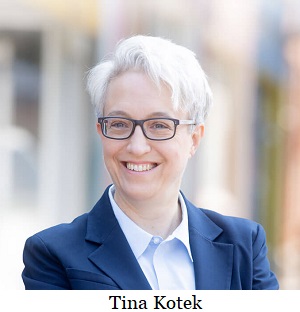



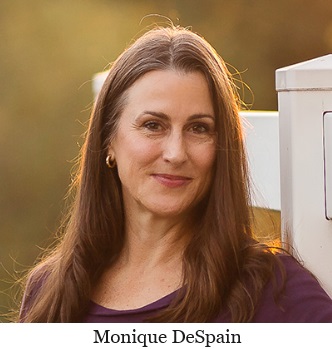

 Vice President Harris took on the lead role to address the crisis at the border on behalf of the Biden-Harris Administration in 2021 and has since presided over record levels of illegal immigration, drug trafficking, human smuggling, and terrorist infiltration into the country. As a result, 4th District communities, along with those across the nation, have been flooded with deadly fentanyl and meth, skyrocketing addiction and homelessness, and surging crime, while bringing law enforcement and public services to their knees.
Vice President Harris took on the lead role to address the crisis at the border on behalf of the Biden-Harris Administration in 2021 and has since presided over record levels of illegal immigration, drug trafficking, human smuggling, and terrorist infiltration into the country. As a result, 4th District communities, along with those across the nation, have been flooded with deadly fentanyl and meth, skyrocketing addiction and homelessness, and surging crime, while bringing law enforcement and public services to their knees.

